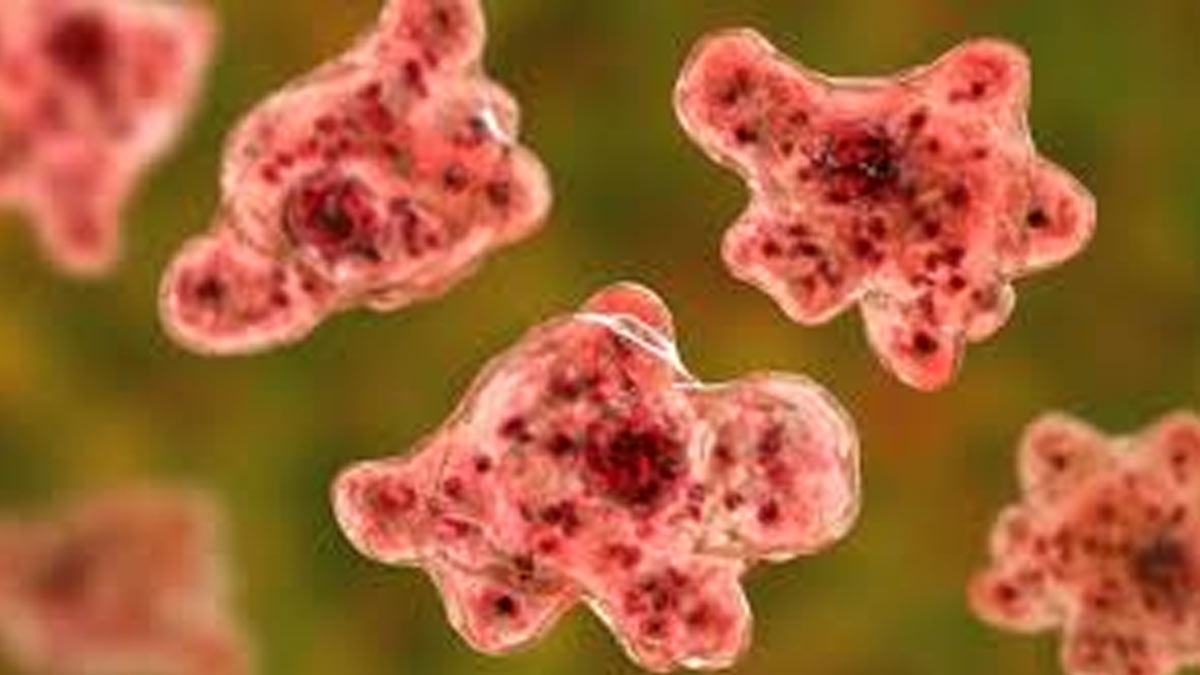
In the scenic state of Kerala, a five-year-old girl's life was cut tragically short after an innocent swim in a nearby pond. This young resident of Moonniyur panchayat in Malappuram district fell victim to a rare but deadly infection caused by a brain-eating amoeba, a stark reminder of the hidden dangers lurking in polluted water bodies. The child, full of life and energy, began to show symptoms of severe illness shortly after her swim, leading to a heart-wrenching battle that ultimately ended in her untimely death.
Table of Content:-
The Deadly Culprit: Naegleria Fowleri
The pathogen responsible for this tragedy is Naegleria fowleri, an amoeba found in warm, stagnant bodies of freshwater such as ponds, lakes, and rivers. Known colloquially as the brain-eating amoeba, this microorganism thrives in contaminated water and soil, particularly in regions with higher temperatures. While it is free-living and doesn't require a host to survive, it becomes a lethal invader when it enters the human body through the nasal passages, leading to a condition known as primary amoebic meningoencephalitis (PAM).
The Onset of Symptoms
After her swim on May 1, the young girl began to exhibit troubling symptoms by May 10, including fever, headache, and vomiting. These symptoms rapidly escalated, indicative of a severe central nervous system infection. Despite the best efforts of medical professionals at the Institute of Maternal and Child Health in Kozhikode Medical College, where she was admitted and placed on a ventilator, the child could not overcome the infection.

Medical Response and Challenges
The medical team diagnosed her condition as amoebic meningoencephalitis, a rare and almost invariably fatal disease. The infection occurs when Naegleria fowleri enters the brain, causing inflammation and destruction of brain tissue. Treatment options are limited and often unsuccessful due to the rapid progression of the disease. The antifungal drug amphotericin B is typically used in treatment, sometimes in combination with other medications, but even with aggressive medical intervention, the prognosis remains grim. The high fatality rate of PAM underscores the dire need for early detection and immediate treatment, though even these measures frequently fall short.
Also Read: India Reports 324 Cases Of COVID-19 Sub-Variants KP.1 And KP.2.; Here's What You Need To Know
A Community on Alert
In the wake of this tragedy, health officials closely monitored other children who had been swimming in the same pond. Fortunately, none of them showed signs of infection and were eventually discharged. This incident, however, has cast a pall over the community, raising awareness about the risks of swimming in polluted water sources.
Historical Context of Naegleria Fowleri Infections
Kerala has faced similar tragedies in the past. The coastal district of Alappuzha reported cases in 2017 and 2023, with both incidents resulting in fatalities. In 2023, a 15-year-old boy succumbed to the same infection, highlighting the persistent and deadly threat posed by this amoeba. The mortality rate for infections caused by Naegleria fowleri is alarmingly high, often reaching 100%, leaving no room for error in prevention and response strategies.
Understanding Naegleria Fowleri
Naegleria fowleri is a thermophilic organism, that flourishes in warm environments. It infiltrates the human body primarily through the nasal cavity when individuals swim or dive in contaminated water. Once inside, the amoeba travels to the brain, causing PAM. Early symptoms mimic those of bacterial meningitis, including severe headache, fever, nausea, vomiting, and neck stiffness. As the disease progresses, patients may experience confusion, seizures, and coma. The condition's swift progression and high fatality rate necessitate immediate medical attention.
Also Read: Delhi Records 47.4 Degrees Celsius, 'Red Alert' Issued For Next 5 Days; Do’s And Don’t Of Heat Wave
Preventive Measures
Preventing Naegleria fowleri infection involves avoiding activities that introduce water into the nasal passages in warm, untreated freshwater bodies. Using nose clips while swimming, avoiding swimming in contaminated water, and ensuring swimming pools are properly chlorinated are crucial preventive steps. Additionally, for nasal irrigation, using distilled or previously boiled water can mitigate the risk of infection.
Bottomline
The tragic death of a five-year-old girl in Kerala serves as a sobering reminder of the lurking dangers in polluted water bodies. While Naegleria fowleri infections are rare, their devastating impact calls for increased public awareness and stringent preventive measures. As communities mourn the loss and health officials continue to monitor potential outbreaks, the hope is that such tragedies can be prevented in the future through education, vigilance, and improved water safety practices.
Also watch this video
How we keep this article up to date:
We work with experts and keep a close eye on the latest in health and wellness. Whenever there is a new research or helpful information, we update our articles with accurate and useful advice.
Current Version